Information for the Community Information for the Community










Information for the Community Information for the Community









Township Administration Building
175 W. Valley Forge Road
King of Prussia, PA 19406
Phone: 610-265-2600
Fax: 610-265-0482 www.umtownship.org
Mon - Fri 8:15 am to 5 pm
Township Police
175 W. Valley Forge Road King of Prussia, PA 19406
Emergency and Call for Service: 9-1-1
Phone: 610-265-3232
Anonymous Tip Line: 484-636-3888
Animal Control ...610-265-3232
Fire and Ambulance
Emergency Phone: 9-1-1
King of Prussia Volunteer Fire Company
170 Allendale Road
King of Prussia, PA 19406
Non-Emergency Ph: 610-265-1063 www.kpvfc.com
Swedeland Fire Co. 609 A Street King of Prussia, PA 19406
Non-Emergency Ph: 610-275-0177 www.swedelandfire.org
Upper Merion Area School District
435 Crossfield Road
King of Prussia, PA 19406
Phone: 610-205-6400
Fax: 610-205-6433 www.umasd.org
Upper Merion Community Cetner
431 West Valley Forge Road King of Prussia, PA 19406
Phone: 610-265-1071
www.umtownship.org/departme nts/parks-recreation/ community-center
This publication is an effort to keep the community informed with what is actually happening in your area. For future editions, I welcome your thoughts on topics that affect the community. I'd be happy to publish your opinions on any relevant topics.
Do you have an event that you'd like to publicize? Let me know, and I'll do my best to incorporate your event into the newsletter.
This is your community. This is your home. Use this publication to share your thoughts and ideas with your neighbors. Are you ready to get involved in your community?
David Amsterdam
franklinmaps@aol.com
Courthouse .........610-278-3000
Swedesburg Volunteer Fire Company 310 Jefferson St. Bridgeport, PA 19405
Non-Emergency Ph: 610-272-9853 www.swedesburgfire.com
Upper Merion Senior Service Center
431 W. VALLEY FORGE ROAD (in the Community Center Bldg.) Phone: 610-265-4715 www.umssc.org
& Rec.........610-265-1071
Works.......610-265-2606
& Codes....610-265-2608


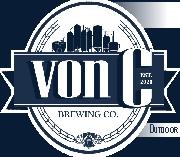





“Coal was king" is a phrase that refers to coal's importance in the Industrial Revolution. From the 1800s through the 1930s and into the 1940s, it was used to heat homes, power factories and steamships, and later even the very trains used to transport it. The coal was transported from the coal fields in upstate Pennsylvania by wagon, then by canal boat, and finally by rail. The Schuylkill River corridor was key to bringing coal to southeastern Pennsylvania's homes and industries. But, the coal industry and other industrial waste discharge led many to regard the Schuylkill River as the dirtiest river in the country.
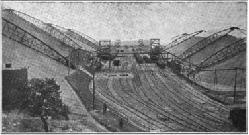
Mining the coal and getting it to market required cleaning and sorting coal by size, a task often done with child labor. The castoff material would pile up, and rainwater would wash the waste into the waterways. The natural flow of the river, along with occasional flooding events, washed the culm (small pieces) and silt (granular particles and dust) into the waterways. Tons of waste from coal mining made its way downriver to Philadelphia, ultimately rendering the Schuylkill River unnavigable.
The culm and silt deposits formed mounds that could be seen above water level in some places.
In 1947, newly elected Pennsylvania Governor James Duff declared the task of cleaning up the Schuylkill River a priority for his administration. Part of the project involved creating impounding basins along the river to deposit the culm and silt to be dredged out of the river. The basins were created by moving the earth into huge bowl-shaped structures. Five dredging machines were designed and built especially for this project. All told, approximately twenty cubic yards of coal mining waste, weighing more than ten million tons, were removed from the river to these basins. What was the state to do with all the coal waste piled in the basins? A call for proposals to repurpose the coal mining waste went out, and the winning bid was just 31¢ per ton by the Stoudt's Ferry Company. Many of us use one of the byproducts of coal waste, re-purposed by the company at summer cookouts: charcoal briquettes.


Two of the impounding basins were located in Upper Merion in areas referred to as “North Abrams” and “Middle Abrams.” In 2001, Upper Merion Township purchased these two basin areas from the state. The areas had very little vegetation due to the silt. Upper Merion sold the remaining silt, and the land was filled, graded, and compacted. Thirty-two acres of the North Abrams land was transformed into Heuser Park with athletic fields, a playground, and a clubhouse for Township organizations. The Middle Abrams acquisition became Bob Case Park, which is just south of Heuser Park. The Schuylkill River West Trail was completed in 2022 and runs parallel to the river from Bob Case Park, through Heuser Park, and through to Valley Forge National Historical Park at Sullivan's Bridge.
Primary source: The Story of the Schuylkill River Project by










Littering is an issue that affects many communities, including Upper Merion. According to a recent study by Keep America Beautiful, over 50 billion pieces of litter are scattered along U.S. roadways and waterways each year, which averages to about 152 pieces per person. While we usually think about the environmental impact of litter, such as plastic waste harming our oceans and wildlife, there are other hidden costs to consider as well. Litter on our sidewalks and streets is unsightly and gives a negative impression, especially to visitors and tourists who come to Upper Merion to see our historical sites and attractions, and to shop at the King of Prussia Mall. It reflects poorly on us as residents and suggests that we don't care about our surroundings.
Litter attracts litter. When people see litter, they are more likely to add to it, thinking it is acceptable and that nobody cares. There's also a mentality that it's not their problem or that someone else will pick it up.
Litter left on the ground can lead to illegal dumping. Next comes graffiti and antisocial behavior, followed by an uptick in the crime rate.
Litter and discarded food waste attract rats and other pests that can spread disease.
Cleaning up litter costs money that could be used for other important community needs. For example, PennDOT spent over
$65 million from 2014 to 2018 removing litter and debris from highways across Pennsylvania. These costs are paid for by our taxes, car registration fees, and tolls.
Solutions to the Problem
Addressing the litter problem requires a collective effort from the community. Here are some solutions: Educate residents about the impact of littering through community events, social media, and local news outlets. Highlight the environmental, health, and economic costs associated with litter. Ensure that there are enough trash and recycling bins in public areas, parks, and at bus and train stops. This makes it easier for people to dispose of their waste properly.
Community clean-up events where residents can come together to pick up litter. This not only helps clean the area but also fosters a sense of community and responsibility. (UM Township is currently promoting an event on March 27th - visit umtownship.org to sign up)
Work with local authorities to enforce existing littering laws more strictly. Fines and penalties can serve as a deterrent to those who might otherwise litter
Implement educational programs in schools to teach children about the importance of keeping their environment clean. Engaging young people can create lifelong habits of proper waste disposal. Encourage local businesses, organizations, and residents to "adopt" a section of a
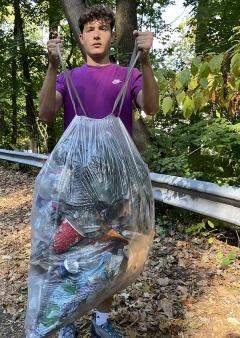
street or park to keep clean. This can create a sense of ownership and pride in maintaining a litter-free environment. By working together and implementing these solutions, we can make Upper Merion a cleaner, healthier, and more beautiful place to live. Let's all do our part to keep our community litter-free!
About me
Michael Bugler lives in King of Prussia and is a senior at Archbishop Carroll High School. You can follow his litter awareness and prevention project on Instagram (instagram.com/keepuppermerionbeautiful)
Are you concerned about debt? It's important to recognize this, but, at the same time, you may have more ways of gaining control of your debt situation than you had realized.
To begin with, not all debts are bad — after all, your mortgage provides you with a place to live, a car loan provides transportation, and student loans may have helped you get the career you wanted. In fact, the wise use of debt can be a key part of your overall financial strategy.
Nonetheless, if you're worried about what you owe, you've certainly got company. Nearly 60% of Americans say they are struggling with debt, according to a recent study by WalletHub, an online personal finance site.
How can you ease these struggles? It may help to follow these steps:
Know your debt. Create a list that includes your mortgage, auto loans, student loans, medical debt, credit card debt and any installment purchases you've made. Then, add up the total amount you owe and
calculate your debt-to-income ratio by dividing your total monthly debt payments by your gross monthly income. (For revolving debt, such as credit cards, use the minimum payments in this calculation.) Ideally, you'd like to have a debt-to-income ratio below 35% if you have a mortgage, or 20% if you don't.
Look for restructuring opportunities
By restructuring debt, you may be able to pay it down more quickly. You can do this by refinancing debts, perhaps by transferring credit card debt to a new card with a low introductory rate or by replacing your mortgage or auto loan with one that carries a lower rate. You might also consider swapping debts, possibly by using secured debt, such as a home equity loan or securities-based lending, to pay off higherrate unsecured loans. Or you could consolidate debt by using secured debt to pay off several high-interest debts or transferring multiple credit card debts into one new card with a lower rate and minimal transfer fees.
Determine how much money will go to debt payments. You do have some latitude as to how much money you'll devote to paying debts each month. To avoid incurring late fees or other penalties, you'll need to make the minimum payments, which means
a flat amount for some loans, such as your mortgage, and a percentage of the outstanding balance on other debts, especially your credit cards. After you've paid the minimum, though, you can choose to pay more, which can shorten the life of the debt and reduce total interest charges, or you can use the money for other goals, such as saving for your retirement or your children's education.
Prioritize your debts. If you can make extra payments on your debts, it's helpful to prioritize them. You could choose the “avalanche” method by paying the debt with the highest interest rate first, or you could instead follow the “snowball” method by first tackling the debt with the lowest balance. The avalanche technique can help you minimize interest payments, while the snowball approach can give you a psychological boost by reducing the overall number of debts you're carrying, although it could result in your paying more interest over time.
Debt may be a fact of life — but if you manage it wisely, life can be a lot less stressful.
This article was written by Edward Jones for use by your local Edward Jones Financial Advisor.

Cat eye infections are a common concern among pet owners, particularly when it comes to conjunctivitis.
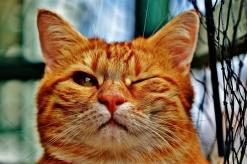
Conjunctivitis, often called “pink eye,” is the inflammation of the conjunctiva, which is the thin, transparent tissue that covers the white part of the eye and inside of the eyelids.
Infections: Viral or bacterial infections are the most common causes. Feline herpesvirus (FHV-1), Chlamydophila felis and Mycoplasma felis are notable culprits.
Anatomic defects: Abnormalities with the eyelids including entropion and eyelid agenesis can lead to conjunctivitis. Entropion is a condition where the eyelids roll in causing pain and inflammation. Eyelid agenesis is a birth defect in which the eyelids do not form properly
Allergens and Irritants: Rarely, allergens including pollen and dust and foreign bodies can irritate the eyes.
Underlying Health Issues: Various conditions including feline immunodeficiency virus (FIV) or feline leukemia virus (FeLV) can weaken the immune system, predisposing cats to eye infections.
Identifying and treating conjunctivitis early can prevent more severe complications. Here are the common symptoms:
Redness: The conjunctiva may appear red or pink.
Swelling: Swelling may be present around the eyes, making them look puffy or even swollen shut.
Discharge: Watery to clear, yellow, or green thick discharge may be in or around the eyes.

Squinting or Blinking: A cat with conjunctivitis often has increased blinking/squinting or keeps the eye closed.
Rubbing or Pawing: Frequent rubbing or pawing at the eyes can occur due to discomfort.
Cloudiness: Cats with conjunctivitis may also have clouding or haze to the clear surface of the eye, the cornea. Behavioral changes: Conjunctivitis is painful. Therefore, some cats can become lethargic or inappetent.
When to
If you notice any of these symptoms, especially if they persisted for more than a day or two and your cat is acting ill, it is time to consult a veterinarian.
Your veterinarian will likely do some testing after examining your cat's eyes.
Schirmer tear test: Especially if there is a lot of thick discharge and if the eyes look very dry, a Schirmer tear test may be done. This involves placing a small strip of paper at the lower eyelid for one minute.
Fluorescein dye test: This involves placing a drop of stain into the eye to check for corneal ulcers which may occur in conjunction with conjunctivitis. Other names that may be used for ulcers are ‘scratch’ or ‘erosion.’
Tonometry: A small non- invasive instrument called a tonometer may be used to check the pressure within the eye.
Both oral and topical options are typically available for treatment. Your veterinarian will determine what is appropriate for your cat's condition.
Antibiotics: Effective against bacterial infections. Antibiotics may also be used to prevent secondary bacterial infections.
Antivirals: Used for viral infections like FHV-1.
Anti-Inflammatories: Reduce inflammation and discomfort.
Artificial Tears: Help keep the eyes moist and relieve irritation.
Pain medication: Improve comfort.

Surgery: Required for treatment of conditions such as entropion and eyelid agenesis.
Cleaning the Eyes: Discharge can be gently wiped away with a clean, damp cloth if the cat will allow for it.
Elizabethan collars: A firm plastic Elizabethan collar should be placed to avoid self trauma, especially if the cat is rubbing at the eye. Elizabethan collars are always recommended when a corneal ulcer is also present.
It's crucial to consult your veterinarian before starting any treatment. Incorrect treatment can worsen the condition or lead to additional complications.
Understanding and identifying conjunctivitis in cats is essential for ensuring your pet's eye health. Early detection and appropriate treatment can prevent complications and ensure a quick recovery. If you have any concerns about your cat's eye health, consult your veterinarian promptly
For more information or to schedule an appointment with our ophthalmology team, contact Metropolitan Veterinary Associates.






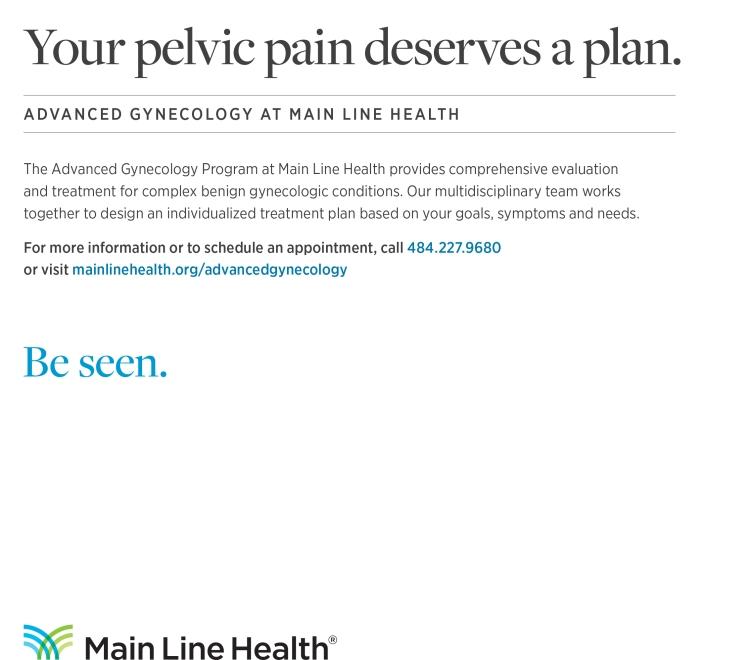
For many patients with pelvic pain, abnormal bleeding, fibroids or endometriosis, getting a definitive diagnosis or finding the right treatment can be challenging. Main Line Health's Advanced Gynecology Program helps these patients find answers and achieve their health goals.
"We listen to patients, believe them and involve them in every level of care," explains Jordan Klebanoff, MD, a fellowship-trained minimally invasive gynecologic surgeon with Main Line Health. "Most patients with pelvic pain have been searching for answers for years and have gynecological issues that cannot be resolved with a simple single treatment or procedure. By partnering with a multispecialty team of providers, we successfully address whole-person care.”
A multispecialty team treating gynecologic conditions
The Advanced Gynecology Program includes minimally invasive gynecologic surgeons, a nurse practitioner and physician assistants partnered with urogynecologists, pelvic floor physical therapists, gastroenterologists, pain management specialists, fertility clinicians and others to diagnose and treat a wide range of noncancerous gynecologic issues. Some include:
Endometriosis/adenomyosis
Uterine fibroids
Pelvic pain
Urinary and fecal incontinence
Infertility
Sexual dysfunction
"Complex gynecologic issues can take extensive time and coordination to trea effectively or medical treatment," says Joseph Gobern,
MD, system chair for the Department of Obstetrics and Gynecology for Main Line Health and fellowship-trained minimally invasive gynecologic surgeon. "Our program supports area OB/GYN physicians and primary care providers by acting as an extension of their practice to handle these complex cases. Patients can then return to their providers for ongoing care.”
Coordinated, patient-first approach
One key to the Advanced Gynecology Program's success is personalized coordination of care. "Our coordinated care approach is the glue that allows us to provide seamless continuity of care," says Dr. Gobern. "With this coordination, we not only treat the underlying condition but also address the far-reaching effects it can cause from endometriosis contributing to disabling pelvic pain to uterine fibroids impacting fertility. This greatly improves health outcomes and overall quality of life.”
Expanded access, so you get the treatment you need
"The Advanced Gynecology Program has been growing rapidly since it began," says Dr. Klebanoff. The program is located at Main Line Health Newtown Square, providing patients with access to many of our specialty physicians and physical therapy services under one roof. This additional practice space enhances convenience and comprehensive care for our patients.
The program has increased its surgical access, as well. Katherine Chaves, MD, a fellowship-trained minimally invasive gynecologic surgeon, joined the program as its third physician. With the addition of Dr. Chaves, the team can better serve its growing patient population. Now, patients can get the treatment they need more quickly.
The Advanced Gynecology Program recently welcomed Dana Shanis, MD, a boardcertified obstetrician/gynecologist and sexual health physician. As a sexual health physician, Dr. Shanis specializes in understanding the physiological, hormonal, structural and psychological factors that contribute to sexual dysfunction. While obstetricians and gynecologists are trained in reproductive health, sexual health encompassing pleasure, connection and intimate experiences has often been overlooked in medical education. Dr. Shanis works to fill this gap by helping women navigate and treat complex sexual health challenges, leading to significant improvements in their overall quality of life.
To learn more about how the Advanced Gynecology Program can help improve your health and well-being, visit mainlinehealth.org/advancedgyn or call 484.227.9680.















Jay
Scott
Natalie
David
Marcela


Larry Schlarb, DMD
Skip Hoerz, DMD
Ama Soleye, DMD
Andrew Rush, DMD
Kristine Rushby, DMD
Bryan Ruda, DMD
Serena Colletti, DMD ORTHODONTISTS ENDODONTICS





DEI is in the news. Just what is it and what difference does it make?

As humans, we all come in different shapes and sizes. We vary in age and stage. We are wrapped in various skin colors and topped with a variety of colors and textures of hair Some of us are blessed with good health, and others struggle with a myriad of issues. We stem from different cultures, speak different languages, and possess a variety of skill sets. Our personalities and economic status can differ significantly. Our families, traditions, belief systems, and cultures are unique. We have different preferences and make different choices. The bottom line is that diversity includes all of the similarities and differences among people.
A football team can be diverse because diversity is about a group and can exist only relative to others. A person is not diverse, but an individual can bring diversity to an organization. In today's climate, diversity refers to groups of people that have been historically underserved in powerful institutions and organizations economically, socially, or politically. These groups include, but are not limited to, populations of color, people with disabilities, people experiencing poverty, LGBTQIA+ people (lesbian, gay, bisexual, transgender, queer, intersex, asexual, plus other queer identities), and women.

As family members, we have all experienced not being treated equally. Equity is not about equality or treating everyone the same; it's about fairness. A teenager in the family is not given the same meal as a sixmonthold. In fact, resources may be divided and shared differently to make sure that each individual has a fair chance to thrive. Equity refers to the systems, processes, and approaches that ensure everyone is given equal opportunity to succeed and is treated with dignity and respect.
To promote equity, efforts must be made to provide opportunities to those that are underserved and marginalized. Those that have the least need a chance to succeed as much as those who have the most. To level the playing field requires an understanding of the root causes of existing disparities. Transparency is essential in this process as cause and effect must be considered to determine what actions or conditions lead to what outcomes. Everyone needs to have clear expectations of consequences and rewards. Ultimately, equity involves increasing justice and fairness within institutions and systems to optimize success for all.
What difference does diversity, equity and inclusion (DEI) make?
Diversity, equity, and inclusion depend on each of us to support each other. Increased inclusion is associated with increased equity; the majority of organizations with higher inclusion and equity also have greater diversity. By acting on these principles, organizations and institutions — from churches and schools to local boards and federal agencies — can better promote engagement among individuals, communities, and policy-makers. In today's divisive climate, where discrimination is celebrated, exclusion is being encouraged, and groups and individuals feel threatened, DEI is needed now more than ever.
The League of Women Voters, at the national, state, and local levels, has adopted diversity, equity, and inclusion in principle and practice. While some wish to abolish the term or its policies, we believe DEI is fundamental both to our future as an organization and to our commitment to help make democracy work. Consider diversity, equity, and inclusion as foundational to the groups and institutions that you value. Together we can make a difference!

It feels good to belong. We've all experienced what it feels like to be the new kid on the block or ill-at-ease in a social situation. Inclusion is an on-going process to ensure that all people and their perspectives are represented as part of a group or structure. It is a dynamic state that capitalizes on diversity to create a healthy sense of community. Inclusion encourages greater performance through full participation from a diverse set of individuals who collaborate, plan, and make decisions.
While inclusive groups are always diverse, diverse groups are not always inclusive. Unconscious biases, stereotypes, and unintentional actions can sabotage inclusivity. Inclusive environments are those in which resources and opportunities are equitably distributed. Individuals feel safe and respected. They are engaged, motivated, and valued for who they are and for their contributions. Inclusivity nurtures the important sense of belonging.

for George ga3456@gmail.com acostacontracting.com








The Valley Forge Park Alliance has been awarded a National Park Foundation grant through the Open Outdoors for Kids program to illuminate the often overlooked African American narratives from the Revolutionary War. This initiative draws on Park-led research to engage the community, particularly students from Norristown Area School District, in a pilot curriculum program combining hands-on activities with immersive field trips at Valley Forge National Historical Park.
In collaboration with Dionne Patterson, founder of UGR3Day, the Valley Forge Park Alliance will create dynamic educational experiences. These experiences will include interactive sessions and, importantly, storytelling-focused excursions.
“I am deeply honored and excited to collaborate with the Valley Forge Park Alliance on this groundbreaking initiative to develop and share the rich African American history that is so vital to our nation's story. This partnership is an incredible opportunity to ensure that these important narratives are not only preserved but also brought to life for future generations. Together, we are creating a lasting impact that will educate, inspire, and empower communities across Pennsylvania,” said Patterson.

Over the next year, the program will connect 200 students with the African American experience at Valley Forge, deepening their understanding of its critical role in American history. Emphasizing accessibility and inclusion, this project is designed to foster a broader appreciation for our shared heritage, creating a strong emotional connection and fostering empathy among all participants.
“We are honored to receive this funding from the National Park Foundation,” said Molly Duffy, Executive Director of the Valley Forge
Park Alliance. “This grant enables us to highlight the contributions of African Americans at Valley Forge and inspire a new generation to engage with this important history.”
The National Park Foundation's Open Out Doors for Kids program ensures that all youth have access to national parks and opportunities to develop a lifelong connection to these treasured spaces. Through field trips, classroom activities, and educational engagements, the program nurtures children's sense of wonder and curiosity, bringing the history and beauty of national parks to life.
The grant will allow the Valley Forge Park Alliance to extend its outreach, particularly to underserved communities, ensuring that more students experience the park's unique historical and cultural significance.
For more information, please contact: molly@vfparkalliance.org.
The Valley Forge Park Alliance inspires appreciation for and citizen stewardship of Valley Forge National Historical Park. As the Park's philanthropic partner, the Alliance connects people to the Park through education, preservation, and celebration of its natural and historical resources. The Alliance enhances the visitor experience while protecting the Park's rich history for future generations.
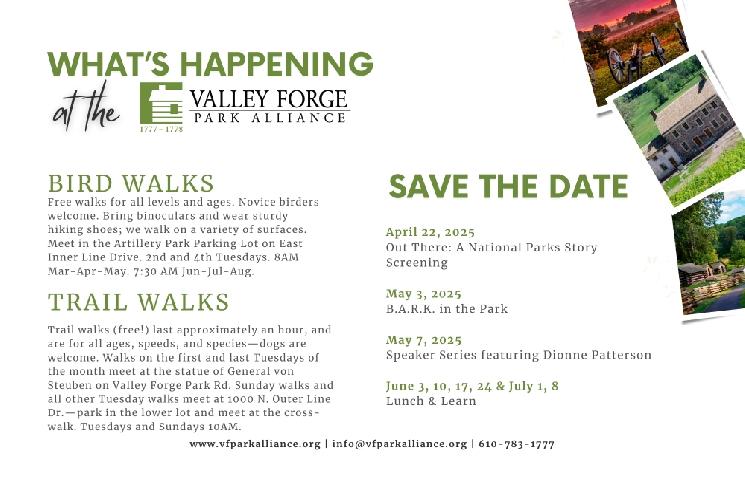






, April 25th, Expressive Path will host our annual Spring Fling, at the LuLu Shriners, 5140 Butler Pike, Plymouth Meeting, PA 19426.
Expressive Path's Annual Spring Fling will feature live music and art to benefit disadvantaged adolescents in our community. This year's theme is Carnival — so come dressed in your best Carnival/Circus look and enter the costume contest!
Spring Fling Carnival will be a fun family event, from 6:00 pm to 10:00 pm. Tickets purchased during the presale are $50 and will be $60 at the door. Tables for 10 people can be reserved. All proceeds will directly support Expressive Path students.
Expect LIVE MUSIC from the amazing Band The Super Naturals and the talented Norristown Area High School Drumline, Dancing, Student Performances, Clowns, Stilt Walker, Auctions, Caricatures, Games, Live Art, and Raffles! They will serve a DELISH dinner, yummy desserts, and food for vegetarians too! Beer, soda, food, water, and all activities are included in your ticket price.
Expressive Path is a non-profit organization that provides creative art and music workshops, to disadvantaged teens 12-19. They allow students to shine through workshops, performances, exhibitions, and community service. Expressive Path teaches at the Expressive Path Creative Arts Center on Cherry Street, in schools, nonprofit centers, churches, recreation centers, and the Montgomery County Youth Center comprised of adolescents residing in shelter or detention.


Through support such as yours, Expressive Path boosts positive self-esteem by creating opportunities for teens to showcase their art in the community and providing the necessary tools. Expressive Path is proud to assist teens with funding to further their education in the arts. With your donations and attendance, Expressive Path can help keep underserved teens on the right track!
Learn more about Expressive Path on our website, expressivepath.org, Facebook, Instagram or LinkedIn. Expressive Path welcomes donations to their Venmo @expressivepath, PayPal https://bit.ly/Donate4ExpressivePath Gift cards are appreciated for raffle baskets.















